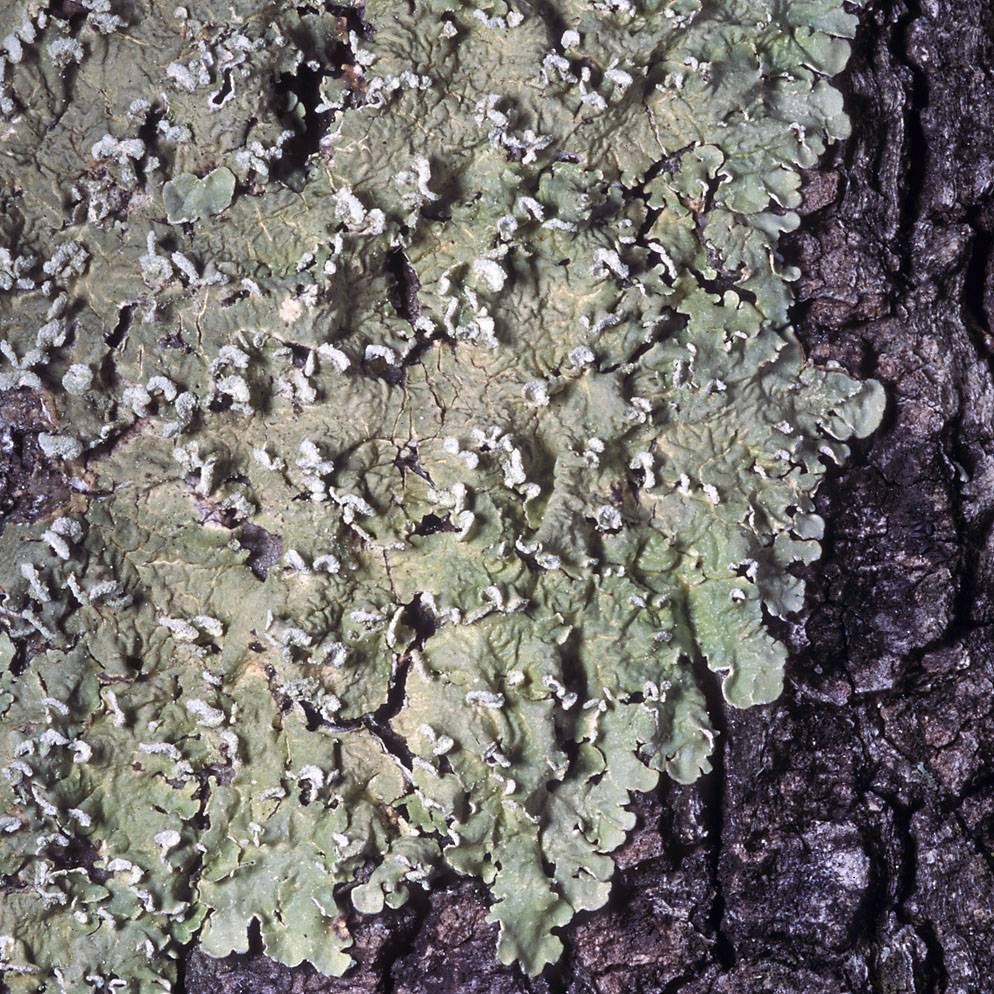
Consortium of Lichen Herbaria
- building a Global Consortium of Bryophytes and Lichens as keystones of cryptobiotic communities -
- Home
- Search
- Images
- Species Checklists
- US States: O-Z >
- US National Parks
- Central America
- South America
- US National Parks
- Southern Subpolar Region
|
Family: Parmeliaceae |
Nash, T.H., Ryan, B.D., Gries, C., Bungartz, F., (eds.) 2004. Lichen Flora of the Greater Sonoran Desert Region. Vol 2. Flavopunctelia: (Krog) Hale, Mycotaxon 20(2): 682 (1984). Life habit: lichenized Thallus: straw-yellow, greenish-yellow to yellowish green (usnic acid present), to 15 cm in diameter, adnate to loosely appressed, foliose, lobate lobes: eciliate, linear to broadly rounded, plane, contiguous, up to 8(-15) mm in diameter, rarely imbricate asexual propagules: some taxa with marginal and/or laminal soredia or lobules; isidia unknown upper surface: smooth to wrinkled pseudocyphellae: common in all but F. soredica, small and punctiform to large and elongate or weakly branched, white upper cortex: paraplectenchymatous, 12-25 µm thick with a non-pored epicortex medulla: 90-360 µm thick, white photobiont: primary one a green Trebouxia, secondary photobiont absent lower surface: smooth to wrinkled, pale tan to black; rhizines simple, often lacking in a broad marginal zone, generally concolorous with the lower surface Ascomata: lecanorine apothecia, laminal, sessile to substipitate; disc: pale to dark rusty-brown or chestnut brown asci: Lecanora-type, with an amyloid tholus, asci 8-spored ascospores: hyaline, simple, round to ellipsoid, 6-16 x 4-10 µm Conidiomata: absent or present, pycnidial, laminal, often concentrated nearer the margins, black, sessile to weakly emergent conidia: bifusiform, 5-10 x 1 µm, but often appearing filiform Secondary metabolites: all species contain usnic acid in the cortex (minor) and lecanoric acid in the medulla (major); 5-chlorolecanoric acid (in minor or trace amounts) has been found as an accessory substance in specimens of all four Sonoran species (76% of the 562 specimens examined) Geography: predominantly temperate or in the higher mountains in tropical regions; unreported from Australia and Antarctica with the greatest diversity in southwestern United States and northern Mexico Substrates: on various angiosperm and conifer species as well as both acidic and basic rocks. Notes: This is the first report of 5-chlorolecanoric acid for the genus, a compound first detected in Punctelia (Elix and Wardlaw 2000). It can be identified by thin-layer chromatography as a small spot just above lecanoric acid in Solvent C. I thank J. A. Elix for assistance with chemical determinations. Two additional species have been described in recent years outside the Sonoran region: F. borreroides Kurok. (Kurokawa 1999) from Puebla, Mexico, and Peru, and F. lobulata Elix & Adler (Elix and Adler 1987) from Argentina. |
Powered by Symbiota









